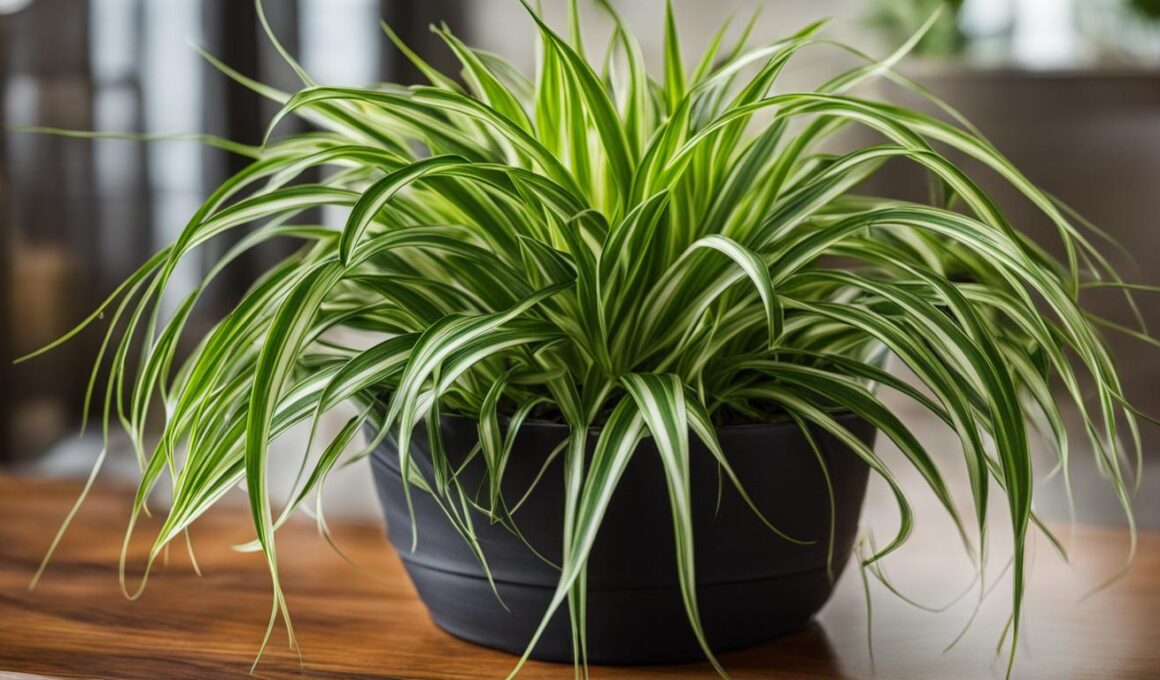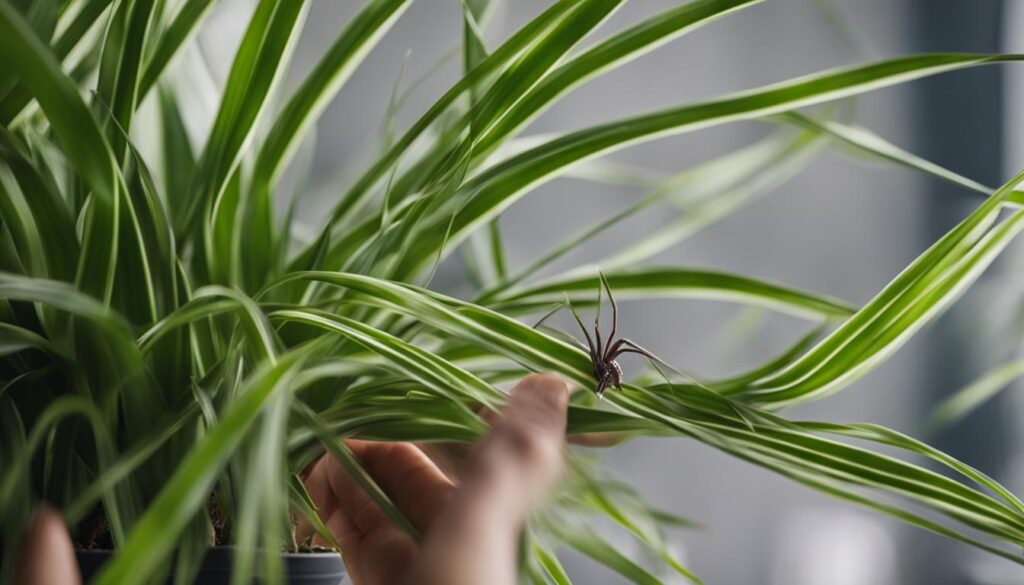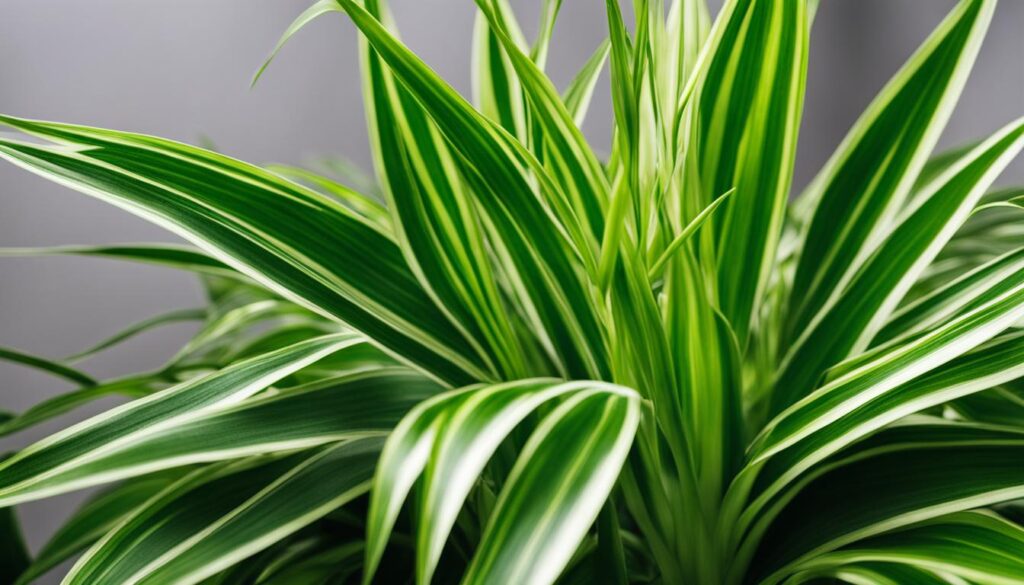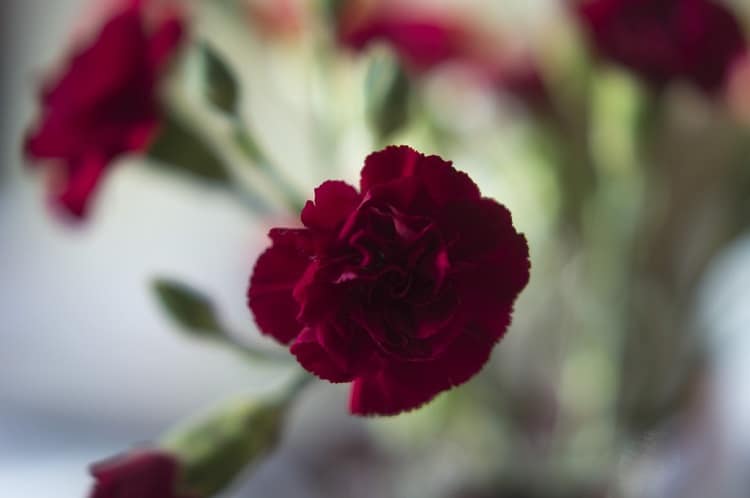Few indoor plants can match the effortless charm and resilience of a spider plant. With their colorful, ribbon-like foliage and remarkable adaptability, spider plants have earned a permanent place in the homes and hearts of plant enthusiasts across the globe. Despite their inherent hardiness, spider plants can sometimes grow sparsely, with long and leggy stems. In this guide, we will provide you with practical recommendations to help you transform your spider plant into a bushier, fuller, and more attractive specimen.
Discover how to enhance your spider plant’s growth by learning about its natural habits, selecting the right container, propagating offsets, pruning, providing optimal lighting, maintaining proper soil conditions, and following proper watering practices.
Key Takeaways
- Implement propagation, pruning, and plant care techniques to create a bushier spider plant.
- Understand the growth habits of spider plants for optimal foliage development.
- Select the appropriate container size to encourage fuller growth.
- Propagate and replant spiderettes (offsets) for a healthier and more robust plant appearance.
- Provide your spider plant with optimal lighting, soil, and nutrient conditions to promote lush foliage.
- Follow proper watering practices to prevent legginess and enable vigorous growth.
Understanding Spider Plant Growth Habits
Spider plants are known for their resilience and quick growth, particularly in spring and summer. They produce long stems that bloom and form babies, also known as offsets. These offsets signal the plant’s readiness for propagation, which contributes significantly to making the plant bushier. Providing the right conditions, such as bright, indirect light and well-draining soil, helps the spider plant thrive and expand. To ensure vigorous growth, mimic the spider plant’s native tropical climate by meeting its light, temperature, and humidity preferences.
- Light: Bright, indirect light
- Temperature: Moderate room temperature, between 65°F and 90°F (18°C to 32°C)
- Humidity: Moderate humidity, ideally around 40-50%
Meeting these conditions fosters an environment conducive to healthy spider plant growth. As a result, the spider plant is more likely to produce offsets, allowing the plant to become bushier and more robust.
| Factor | Optimal Condition |
|---|---|
| Light | Bright, indirect light |
| Temperature | 65°F – 90°F (18°C – 32°C) |
| Humidity | 40-50% |
Paying close attention to these growth factors can help you nurture your spider plant and encourage the development of a lush, bushy appearance. By understanding the plant’s growth habits, you can properly care for your spider plant and ensure it reaches its full potential.
Choosing the Right Container for Your Spider Plant
The container size plays a vital role in spider plant health. A slightly snug pot one size bigger than the rootball encourages roots to grow and foliage to expand, leading to a bushier plant. Conversely, an overgrown spider plant may require repotting into a larger container if the roots have become root-bound or taken the shape of the pot, as this stimulates new growth.
When selecting the ideal container for your spider plant, consider the following factors:
- Material: Opt for materials such as terracotta, plastic, or ceramic that offer good drainage and insulation.
- Size: Choose a pot that is one size larger than the rootball to give the spider plant some room to grow while still maintaining a snug environment.
- Drainage: Ensure the container has drainage holes to prevent excess water buildup, which can lead to root rot.
As the spider plant’s roots grow and fill the container, it might become necessary to re-evaluate the pot size. Repotting is crucial if the plant becomes root-bound. Signs that your spider plant requires a larger container include:
- Sudden wilting or yellowing of leaves
- Roots growing through and out of the drainage holes
- Soil drying out very quickly, even though the watering schedule is consistent
- Roots taking the shape of the pot and being tightly packed
When repotting your spider plant, select a container that is one or two sizes larger than the current pot and fill it with fresh, well-draining soil. This process will allow the roots to spread out, promoting healthier foliage and a bushier appearance.
Propagating Spiderettes for a Fuller Look
One of the most effective ways to achieve a bushier spider plant is through propagation. Propagating spiderettes (spider plant babies) fosters a fuller, more vibrant appearance for your plant, filling in any gaps and promoting a healthier overall look. Knowing when to separate the spiderettes, how to root them, and how to replant them for maximum fullness are essential steps in this process.
When to Separate Spider Plant Babies
The best time to separate spider plant babies is when they have reached an adequate size of at least an inch in height and are ready to be clipped from the mother plant’s stem. At this stage, the spiderettes have developed enough to sustain themselves and start developing their roots when separated from the mother plant. Keep an eye on your spider plant for any signs that the offsets are mature enough to be removed.
Rooting the Spiderettes
After spiderette separation, place the separated spider plant babies in water or moist soil for root development. Be sure to keep the water clean and the soil moist, as these conditions are vital for successful root growth. After the roots have grown to an inch or more, the offsets are ready for replanting.
Replanting for Maximum Fullness
Replant rooted spiderettes back into the mother plant’s container or in separate pots, depending on your desired fullness. By placing them closer to the mother plant, you can fill in gaps and create a dense, lush appearance. Consider using the following table as a guide for how many offsets to replant in a particular pot size:
| Pot Size | Number of Offsets |
|---|---|
| 4-inch | 2 – 3 |
| 6-inch | 3 – 5 |
| 8-inch | 5 – 8 |
| 10-inch | 8 – 12 |
Replanting spiderettes is a simple yet effective technique that will leave your spider plant looking fuller, healthier, and more attractive. With some patience and care, you’ll notice a significant difference in the appearance of your spider plant over time.
Pruning Techniques to Encourage Bushiness
Pruning your spider plant is an essential part of maintaining its lush appearance and encouraging bushy growth. It involves trimming off the brown tips and selectively removing older, stretched, or discolored leaves. This not only enhances the plant’s aesthetics but also stimulates the production of new foliage, contributing to a fuller and bushier look.
When pruning, ensure that you:
- Clean and sterilize your pruning shears to avoid introducing diseases or pests to your plant.
- Examine your plant thoroughly and pinpoint the leaves in need of trimming or removal.
- Trim off brown tips with clean, angled cuts just below the damaged portion of the leaf blade.
- Remove whole leaves by making clean cuts close to the plant’s base, which encourages new growth and a more attractive shape.
- Perform these pruning tasks regularly to maintain your spider plant’s health and bushiness.
Regular check-ups and timely pruning help your spider plant attain optimal health and growth. As the plant continues to produce new growth, you may also need to implement repotting and monitoring optimal lighting conditions for even fuller appearances.
Here are some common signs that your spider plant may need pruning:
| Sign | Description |
|---|---|
| Yellowing leaves | Leaves may begin to yellow due to various reasons, including overwatering or improper lighting. Snip off yellow leaves to prevent further stress on the plant, allowing for new foliage to develop. |
| Brown tips | Brown tips may arise from inconsistent watering or exposure to minerals found in tap water. Trimming off the affected tips not only ensures a healthier appearance but also helps to prevent further damage to the foliage. |
| Overgrown appearance | Over time, your spider plant might grow disproportionally, making it look unkempt or unbalanced. Regularly pruning and shaping the plant can keep it lush, well-formed, and bushy. |
In summary
, employing proper pruning techniques is a vital aspect of promoting a bushier and healthier spider plant. Consistent care and attention, along with optimal lighting, suitable pots, the addition of new spiderettes, and balanced watering, contribute significantly to ensuring a lush, vibrant, and attractive spider plant.
Optimal Lighting Conditions for Lush Growth
Spider plants prefer bright, indirect light, with an east-facing window providing an optimal environment for producing bushy foliage. Excessive shade can inhibit growth, while direct sunlight can burn the leaves, so finding a balance is crucial. A well-lit environment encourages your spider plant to grow lush and fuller, ultimately resulting in a more attractive appearance.
Understanding the light preferences of spider plants will aid in nurturing a healthy, bushy plant. The following guide highlights the different types of lighting conditions and their effects on spider plant growth:
| Lighting Condition | Effect on Spider Plant Growth | Recommendation |
|---|---|---|
| Bright, indirect light | Promotes lush, bushy growth | Ideal for spider plants |
| Direct sunlight | Can burn leaves and cause growth to slow | Avoid or provide shade during intense sunlight hours |
| Low light | Leaves become less vibrant, plant becomes leggy | Move plant to a brighter location |
To ensure your spider plant receives optimal lighting conditions, consider the following tips:
- Select a window with bright, indirect light exposure, preferably east-facing.
- Monitor your plant and adjust its position if you notice signs of sunburn or insufficient light, such as brown tips or weakened, leggy growth.
- During periods of intense sunlight, use lightweight curtains or shading materials to protect your plant from harm and maintain a balanced light environment.
Consistently providing your spider plant with the proper lighting conditions will encourage robust growth, resulting in a lush, bushy appearance that enhances your indoor space.
Soil and Nutrient Essentials for Vibrant Foliage
To achieve vibrant foliage and stimulate lush growth, providing the correct soil and nutrients to your spider plant is crucial. Spider plants require moist, well-draining soil that is mixed with perlite or pumice to prevent root rot. Additionally, they thrive in slightly acidic to slightly alkaline soil, with a pH ranging between 6 to 7.2.
During the growing season, fertilize your spider plant every two to four weeks with a balanced, all-purpose fertilizer. This promotes lush growth and supports the overall health of the plant. However, it is essential to avoid using fertilizers with high salt concentrations, as this can lead to brown leaf tips.
- Choose a well-draining soil that retains enough moisture without waterlogging the roots.
- Add perlite or pumice into the soil mix to facilitate a good drainage system.
- Test the soil pH to ensure it is between 6 to 7.2 for ideal growing conditions.
- Provide regular fertilization with a balanced, all-purpose fertilizer during the growing season.
- Avoid fertilizers with high salt concentrations to prevent browning of leaf tips.
| Aspect | Details |
|---|---|
| Soil Type | Moist, well-draining soil with adequate perlite or pumice |
| Soil pH | 6 to 7.2 (slightly acidic to slightly alkaline) |
| Fertilizer | Balanced, all-purpose fertilizer, low in salt content |
| Fertilization Frequency | Every 2 to 4 weeks during the growing season |
When these essential factors are addressed, your spider plant will produce lush, vibrant foliage and enjoy robust health, ultimately leading to a bushier and more attractive plant.
Watering Practices to Prevent Legginess
Proper watering techniques are crucial in maintaining a bushy appearance for your spider plant. Overwatering can lead to yellowing leaves and root rot, causing the plant to become leggy and sparse. To prevent these issues, it is essential to assess the moisture level of the soil before watering.
Insert a finger into the top two inches of the soil to determine its moisture content. If it feels dry, it is time to water your spider plant. Make sure to use distilled or rainwater, as tap water may contain harmful minerals that can damage your plant.
Correct watering practices are crucial in preventing leggy growth:
- Check the top two inches of soil for moisture before watering.
- Water only when the soil is dry.
- Use distilled or rainwater to avoid harmful minerals found in tap water.
Establishing a well-draining soil structure is another essential factor in preventing leggy growth. Combining soil with perlite or pumice helps enhance drainage, ensuring your spider plant receives adequate hydration without becoming overwatered or waterlogged.
| Watering Mistake | Result | How to Fix |
|---|---|---|
| Overwatering | Yellowing leaves and root rot | Check the top two inches of soil for moisture before watering, and use distilled or rainwater. |
| Poor drainage | Stagnant water and root rot | Mix soil with perlite or pumice to improve drainage. |
By following best practices for watering and maintaining well-draining soil, you can prevent leggy growth and promote a fuller, bushier appearance for your spider plant.
Will Removing Aphids from Kale Affect the Health of My Spider Plant?
Yes, removing aphids from kale can impact the health of your spider plant. Aphids can spread to other nearby plants, so it’s important to address the issue promptly. Regular inspection and preventive measures will help maintain the overall health of your garden.
Conclusion
To cultivate a bushier spider plant, consistently apply the growth tips discussed throughout this article. Proper pot selection plays a crucial role in fostering healthy root development, leading to more abundant foliage. Regular pruning is essential for encouraging new growth, enhancing the plant’s shape and fullness.
Rooting and replanting spiderettes not only fill in any gaps in the plant’s appearance but also contribute significantly to the overall health and vitality of the spider plant. Additionally, maintaining optimal lighting and soil conditions helps the plant thrive and grow more vigorously, achieving the desired lush appearance.
Finally, thoughtful watering and feeding practices make a significant difference in the spider plant’s well-being. By being attentive to your spider plant and implementing these essential growth tips, you will enjoy the benefits of a healthy, vibrant, and bushy spider plant. Patience is key, as it takes time for your plant to respond to these improvements in care.











